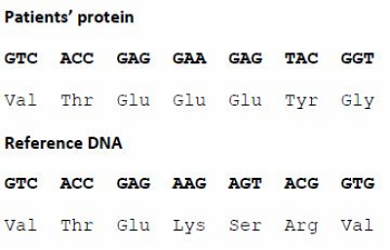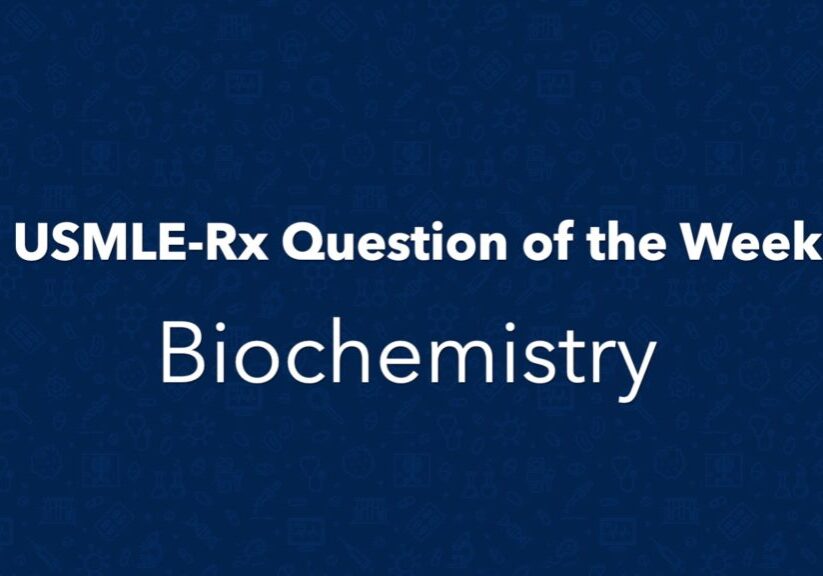Check out today’s Step 1 Qmax Question Challenge.
Know the answer? Post it below! Don’t forget to check back for an update with the correct answer and explanation (we’ll post it in the comments section below).
 A 66-year-old woman with a history of cigarette smoking and extensive sun exposure is found to have a basal cell carcinoma. The cancer is excised, with clear margins, and genotyped so the the causative mutation may be identified. The mutation of interest is shown in the DNA-coding region and corresponding polypeptides shown below.
A 66-year-old woman with a history of cigarette smoking and extensive sun exposure is found to have a basal cell carcinoma. The cancer is excised, with clear margins, and genotyped so the the causative mutation may be identified. The mutation of interest is shown in the DNA-coding region and corresponding polypeptides shown below.
Which of the following diseases is caused by the same type of mutation as this patient’s mutation?
A. Cystic fibrosis
B. Duchenne muscular dystrophy
C. Huntington disease
D. Sickle cell disease
E. Williams syndrome
———————–
Want to know the ‘bottom line?’ Purchase a USMLE-Rx Subscription and get many more features, more questions, and passages from First Aid, including images, references, and other facts relevant to this question.
This practice question is an actual question from the USMLE-Rx Step 1 test bank. For more USMLE Step 1 prep, subscribe to our Flash Facts and Step 1 Express video series. Score the best deal on all three products with a Step 1 Triple Play Bundle.




B
B
B
Frame Shift Mutation
C
b
frameshift
B
A poor question. Is it really B? The mutation looks like a single nucleotide deletion. 60-65% of mutations of the dystrophin gene in patients with DMD are deletions of one or more exons (not nucleotides). Partial gene duplications occur in another 5-10% of individuals. The genetic lesions in the rest of the DMD patients are single nucleotide variants, small deletions or insertions in the coding sequence, or splice site variants.
how much cbd to smoke to induce sleep